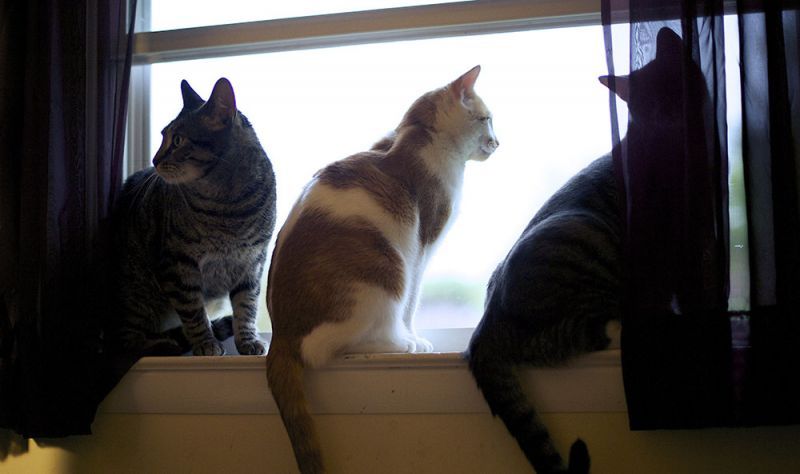Determining and exceeding capacity
Use data to improve the care of animals with your rescue group

Determining Capacity
According to humane care standards, it takes approximately 15 minutes per day to provide basic care for each animal in a shelter environment (to clean the living environment and provide daily nutrition). So, for example, if you have one hour per day to care for the animals, that means you have the capacity to care for four animals, including your own pets. You can use the UC Davis Virtual Consultant to assess whether your housing for animals is adequate to ensure humane care.
If you provide more than minimum care, for example, enrichment, grooming, monitoring health and behavior and showing the pet to potential adopters, you need to spend even more time caring for each animal. Another way of determining whether the correct capacity has been calculated is whether all animals are being provided with The Five Freedoms.
Rescue groups often have a variety of types of temporary homes for their animals— from brick and mortar facilities to cages at pet stores to foster homes. The correct capacity, still using The Five Freedoms as a guide, should be calculated for each of these different types of environments to ensure that an organization is not exceeding capacity and putting their charges at risk of inhumane treatment.
The foster coordinator or another staff member needs to ensure that foster providers are not overwhelmed with the number of animals they take in and that all animals in the home are receiving humane care. One way to implement this is for the foster coordinator to have ongoing discussions with each foster provider to determine capacity (the upper limit of animals that should be kept in that home) based on pre-determined factors (e.g., space, time the foster provider spends at home, potential for creating an isolation room, the foster provider’s own pets), while also taking into account the needs of the foster pet. For example, special medical treatment or behavior modification will reduce the foster provider’s overall capacity to care for additional animals, while a mother and her babies can be can be considered just one animal if the babies do not need specialized care. You can also ask foster providers to send a health and behavior report on a regular basis and require them to attend at least one adoption event per month so an organization can keep an eye on the animals. It is important not to set a capacity number in stone, but to use it as a starting point and allow room to adjust for the specific and evolving situation of each foster home.
In determining capacity, it is essential that all animals have sufficient space in their primary enclosure, whether it is a cage or a home. According to the Association of Shelter Veterinarians’ Guidelines for Standards of care in Animal Shelters at p. 7:
Primary enclosures must provide sufficient space to allow each animal, regardless of species, to make normal postural adjustments, e.g., to turn freely and to easily stand, sit, stretch, move their head, without touching the top of the enclosure, lie in a comfortable position with limbs extended, move about and assume a comfortable posture for feeding, drinking, urinating and defecating. In addition, cats and dogs should be able to hold their tails erect when in a normal standing position. Primary enclosures should allow animals to see out but should also provide at least some opportunity to avoid visual contact with other animals. Tethering is an unacceptable method of confinement for any animal and has no place in humane sheltering.
Crates should never be the permanent residence for an animal. That being said, whenever an animal is in a crate (whether for transport, an adoption event, crate training or any other reason), it should be large enough for the animal to lie down, sit and stand in a natural position. Animals should not share a crate unless it is a female with offspring or when there is a behavioral benefit. Even then, such confinement is acceptable only if the crate size allows the above criteria to be met without the animals having to lie on top of each other.
Exceeding Capacity
There are constantly reports of rescue groups that have had their animals confiscated and charged with cruelty. Being overcapacity is especially heartbreaking because often the people involved started out with the best intentions, but eventually took in more animals than they could humanely care for and became overwhelmed. Until we cure the root problems of animal overpopulation, there will be a never-ending source of animals that need our help. It is so easy to take in more animals than your organization truly has capacity for. The truth is, however, when a rescue group exceeds its capacity for humane care, whether or not it is intentional, it can ruin the lives of both the animals and people involved. Being overcapacity is considered a form of animal cruelty because it inflicts widespread suffering over a long duration of time. Learning the signs of exceeding capacity and reporting someone you suspect to the proper authorities will prevent animal abuse and save an organization that is going down the wrong path.
In extreme cases, animal hoarding is defined as having more pets than one can provide humane care for; failing to provide minimal standards of nutrition, sanitation, shelter and veterinary care; denying both the inability to provide basic care and the impact that failure has on the animals and people in the household; and continuing to accumulate more animals. Hoarding is less about the number of animals a person has in her possession and more about the quality of care provided to each one.
Many times, the continued accumulation of animals occurs because the individual wrongly thinks that only she can provide adequate care for them. In many cases, the person really does care about the animals and tries to provide for them. The typical profile of a rescuer who has exceeded capacity is someone who is preoccupied with animals, believes she has special abilities to communicate with them, spends most of her time and funds on the animals and tends to be socially isolated, having little contact with others besides a veterinarian.
Signs that a rescuer may be overcapacity include:
- Accepting more animals into the organization than are adopted out
- Having many animals with a poor external appearance
- Keeping many un- or under-socialized animals
- Maintaining impossible adoption standards because no one else is “good enough” to care for the animals ✓✓ Facing widespread disease that is usually only present in overcrowding situations (e.g., URI, parasites, kennel cough, FeLV)
- Taking animals to the veterinarian only once, even when follow-up care is needed
- Refusing to euthanize animals whose physical health is compromised to the point that they no longer have a good quality of life
- Keeping bodies of animals that have passed
If you suspect that someone in your organization or elsewhere is exceeding capacity, what should you do? If it is both possible and safe, you should try to visit the person’s home and see for yourself if the animals are in danger. Convey your concerns to the director of the rescue group or members of the board of directors. If that is not possible, you can talk to your local animal control agency or shelter, public health department, mental health department, adult or child protective services or your local district attorney’s office. You can use these resources for other suggestions on how to report suspected cruelty.
Read more about capacity for care in Animal Sheltering magazine's What's Your Magic Number?.


